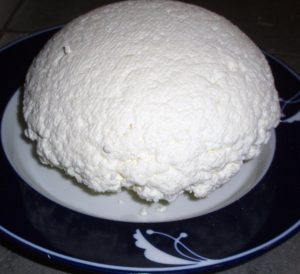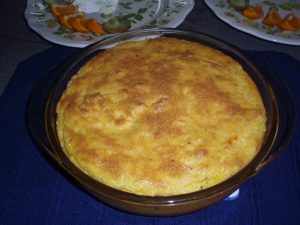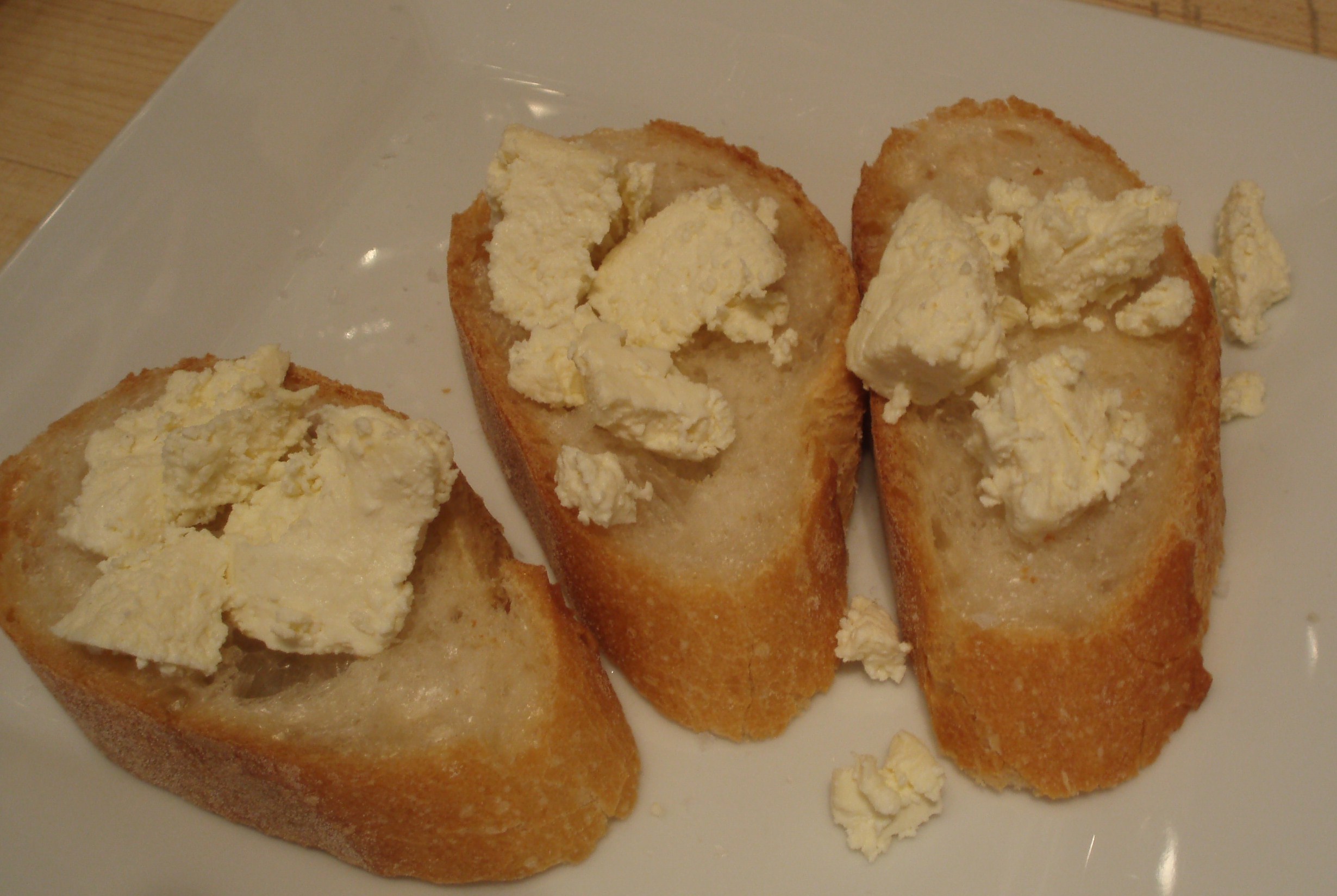
By Judith Yamada, The Kitchen Maven
CHEESE, please.
I love the stuff. My dad loved the stuff too. He used to bring home a variety of delicatessen cheeses. We enjoyed most of them, except for the Limburger. That was known as “stinky cheese”, so we left the room when he indulged.
As for cream cheese, we always had some in the fridge. There was a bagel factory just down the street, and we didn’t want to get caught short. I’ve followed the tradition. In my world, just about anything tastes good with the addition of cream cheese. But, when looking for melting qualities, with a delicate flavor, give me Fontina or Gruyere. Their smoothness and subtle nuttiness are excellent in any mildly flavored melty cheesy recipe. Italian Parmigiano Reggiano in a wedge (only from Italy) is by far the most delicious for hearty Italian and many Mediterranean recipes. Always save the Parmigiano Reggiano rinds. If allowed to cook slowly in a bubbling kettle of minestrone or vegetable soup that rind will take your soup from boring to delicioso.
As for baking, whole milk Ricotta is divine. And it’s easy to make at home without any kits. Recipes can be found all over the internet. Or let me know, and I’ll share mine, contact the Kitchen Maven at m.me/CreativepenandpantryFor just plain eating with a crust of bread, I’ll take French Bucheron (not from anywhere else) or Tillamook Sharp Cheddar, from Oregon, any day.
Although there’s no specific date for the discovery of cheese, the delicious stuff we know as cheese was probably discovered accidentally when travelers, at least 4000 years ago, used the stomach of an animal like a sheep, cow or deer as a bladder to transport milk. Naturally occurring rennet in the stomach lining of these animals, plus the heat of the sun, likely separated the curds and whey and the magic of cheese was discovered. Fresh cheeses like ricotta and cream cheese are acid cheeses. They need direct acidification to become cheese. Most cheeses require both rennet and a culture to coagulate the milk.
A survey published February 5, 2019, of nearly 75,000 cheese eaters, ranks the top 10 cheeses voted most popular by the participants.
I share cheese recipes with you often, but I haven’t shared these yet. Enjoy!

1-pound natural whole milk ricotta
½ cup dry (not water packed) well crumbled feta cheese, divided
½ cup + 2 tablespoons finely chopped FRESH herb leaf combination (basil, flat leaf parsley, oregano, marjoram, thyme, cilantro), divided
½ teaspoon freshly ground black pepper (or to taste)
¼ teaspoon kosher salt (optional)
2 Tablespoons + 1 teaspoon high quality, fruity, extra virgin olive oil, divided
Line a wire mesh colander with natural cotton cheesecloth and place it over a small bowl. Combine the ricotta with ¼ cup crumbled feta. Mound the cheese mixture into the lined colander, pressing it down evenly. Cover with plastic wrap and allow it to thoroughly drain, overnight, in the refrigerator. This may be refrigerated up to 3 days, before baking, if needed.
When ready to bake, preheat oven to 375 degrees F.
Toss the ricotta/feta mixture into a big bowl, add freshly ground pepper to taste and kosher salt, if using, along with ½ cup finely chopped fresh herbs. Mix well.
Brush 1-teaspoon olive oil over the inside of an 8 or 9 -inch oven safe glass pie pan. Press the cheese mixture evenly into the prepared pan. Brush the top of the cheese with extra virgin olive oil.
Place oven rack at center position
Bake at 375 degrees F. for about 40-50 minutes or until cheese pulls away from sides of pan and begins browning. Center should become firm and have almost no jiggle. Cool on a rack at least 15 minutes. May be served slightly warm or at room temperature. To serve, cut into pie shaped wedges
To serve,
1. Pour ¼ cup warm marinara sauce into shallow serving bowls. Cut wedges of baked ricotta and place them on the sauce. Drizzle with a little more sauce, some reserved feta, fresh herbs, and crusty bread, if desired.
2. Plate wedges of baked ricotta, drizzle with reserved feta and a little EVOO. Serve with olives, a green salad with oil and vinegar dressing and rolls, if desired.

Jezebel Chevre Tartlets
Jezebel Sauce ingredients:
12 ounces juice packed crushed pineapple, drained
9-10 ounces organic all fruit apricot jam or spread
2-4 ounces extra hot prepared white horseradish (depending on taste)
3 tablespoons dry mustard
1 teaspoon coarsely fresh ground black pepper
Cream Cheese Pastry ingredients:
3 cups unbleached all purpose flour
¼ teaspoon sea salt
¼ teaspoon fine raw sugar
1 cup cold cream cheese
1 cup cold unsalted butter
Chevre Filling ingredients :
8 ounces Chevre goat cheese, at room temperature
4 ounces cream cheese, at room temperature
Jezebel Sauce directions:
Combine drained crushed pineapple, apricot jam, horseradish, dry mustard and freshly ground black pepper. Stir well. Store in refrigerator in clean glass canning jar with lid. Allow Jezebel sauce to age, in refrigerator at least 24 hours before using. Sauce keeps well, refrigerated, for at least 2 weeks and may be served in Jezebel chevre tartlets, with poultry, ham, on sandwiches or poured over softened cream cheese as a spread for crackers.
Cream Cheese Pastry directions:
Pour flour, salt and sugar into the bowl of a large food processor, cut cream cheese and butter into 6 chunks each and add to processor bowl. Pulse several times; when ingredients appear mixed, process until dough holds together. Remove dough from bowl; form into a ball. Wrap in plastic wrap and refrigerate 15 minutes.* When ready to bake tartlets, remove pastry from refrigerator and form into 48 1-inch balls of dough. Press the dough balls into tartlet pans, pressing up sides to form a hollow for filling after baking. Bake in preheated 325 degree oven on middle rack, 20-25 minutes. Check tartlet shells after 20 minutes. Remove if edges and bottoms are lightly golden (it’s easy to remove a shell to peak at bottoms. If shells aren’t done, return them to oven for five minutes or until golden on edges and bottoms. Cool 10 minutes in pans; remove from pans and turn upside down on cooling racks until thoroughly cooled.
*If refrigerating dough more than 15 minutes before baking, allow it to soften at room temperature about 15 minutes before baking. Bake within 24 hours.
Chevre Filling directions:
Bring cheese to room temperature (softened). Mash cheeses together and whisk or beat with a large spoon until smooth and well blended. Fill hollows of tartlet shells with cheese mixture, filling hollows completely but level on top. Top the cheese with about ½ teaspoon Jezebel sauce. Garnish tray with fresh, washed and towel dried herbs.

Creamy Cheddar Grits
3 cups whole milk
3 cups water
2 teaspoons kosher salt
1 ½ cups coarse ground cornmeal
6 tablespoons unsalted butter
½ teaspoon freshly ground black pepper
6 ounces sharp Cheddar
Put the first three ingredients into a 6-quart heavy pot over medium high heat. Bring mixture to the boil. Very slowly, add the cornmeal while whisking throughout. Once the cornmeal has been whisked in, turn the heat to low and cover the pot. Every minute or two remove the lid and whisk to prevent lumps. Get into the bottom corners of the pot, when stirring. Cook around 20 minutes or until creamy. Remove the pot from the heat. Whisk in the butter and pepper. When the butter has melted, gradually whisk in the cheese – a little at a time. Serve at once. This is delicious with fried or poached eggs and with bacon and with shrimp and hot sauce. Comfort food. Serves 6
Adapted from the Food Network, Alton Brown, 2004


